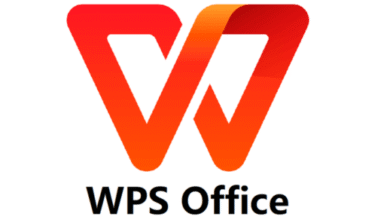
“Agile vs. Waterfall: Choosing the Right Software Development Methodology” is a crucial decision in the software development process. Both methodologies have their advantages and disadvantages, and the choice depends on the project’s requirements, team dynamics, and other factors. Here are 15 key points regarding Agile and Waterfall methodologies, along with their respective pros and cons:
Agile Methodology:
- Iterative Approach: Agile breaks the project into smaller, manageable iterations.
- Pros: Flexibility, faster delivery, and improved adaptation to changing requirements.
- Cons: Lack of clear project structure, potential scope creep.
- Continuous Feedback: Agile encourages ongoing collaboration with stakeholders.
- Pros: Improved communication, alignment with user needs, and reduced misunderstandings.
- Cons: Time-consuming, potential decision-making delays.
- User-Centric: Agile prioritizes the end-user’s needs and feedback.
- Pros: Higher user satisfaction, reduced rework, and better product-market fit.
- Cons: Constant feedback management, potential feature churn.
- Embraces Change: Agile accommodates changes throughout the development process.
- Pros: Adaptability, better response to market changes, and reduced sunk costs.
- Cons: Uncertainty, potential project scope creep.
- Shorter Development Cycles: Agile promotes frequent, short development cycles.
- Pros: Faster time-to-market, quicker user feedback, and better risk management.
- Cons: Frequent context switching, potential integration challenges.
- Cross-Functional Teams: Agile encourages multi-disciplinary teams.
- Pros: Improved collaboration, better problem-solving, and more ownership.
- Cons: Potential communication issues, need for specialized training.
- Transparency: Agile processes are transparent, with progress visible to all team members.
- Pros: Accountability, alignment, and early issue identification.
- Cons: Potential information overload, need for management oversight.
- Customer Collaboration: Agile emphasizes customer collaboration throughout the project.
- Pros: Customer-driven development, reduced misalignment, and better end results.
- Cons: Time-consuming, potential scope changes.
- Risk Mitigation: Agile’s iterative approach helps identify and mitigate risks early.
- Pros: Better risk management, improved quality, and reduced project failure.
- Cons: Frequent reassessment, potential issues with risk identification.
- Faster ROI: Agile can lead to quicker return on investment.
- Pros: Financial benefits, competitive advantage, and improved product quality.
- Cons: Higher ongoing development costs, potential resource allocation issues.
- Quality Focus: Agile promotes a focus on product quality from the beginning.
- Pros: Improved product quality, reduced technical debt, and increased user satisfaction.
- Cons: Potential schedule delays, higher initial costs.
- Self-Organizing Teams: Agile encourages teams to self-organize and make decisions.
- Pros: Team ownership, improved problem-solving, and faster decision-making.
- Cons: Potential conflicts, need for strong team dynamics.
- Scaling Possibilities: Agile methodologies can scale for larger projects.
- Pros: Flexibility in large project management, potential for parallel development.
- Cons: Increased complexity, need for well-defined processes.
- Customer Satisfaction: Agile’s customer-centric approach often leads to higher satisfaction.
- Pros: Improved relationships, customer loyalty, and positive brand reputation.
- Cons: Continuous demands, potential project scope changes.
- Adherence to Timeline: Agile provides better adherence to timelines through regular reviews.
- Pros: Timely course correction, better project control, and improved predictability.
- Cons: Frequent planning and tracking, potential scope changes.
Waterfall Methodology:
- Sequential Phases: Waterfall follows a structured, sequential approach to development.
- Pros: Clear project structure, easy tracking of progress, and minimal scope changes.
- Cons: Limited adaptability, potential delivery delays.
- Well-Defined Requirements: Waterfall requires detailed project specifications up front.
- Pros: Reduced ambiguity, clear project scope, and easier risk assessment.
- Cons: Limited adaptability, potential scope creep, higher initial planning effort.
- Limited Customer Involvement: Waterfall typically has less customer involvement after the initial requirements phase.
- Pros: Reduced demands on customers, minimal disruptions during development.
- Cons: Potential misalignment with user needs, reduced adaptability.
- Longer Development Cycles: Waterfall involves longer development cycles.
- Pros: Reduced context switching, better resource allocation, and simpler project management.
- Cons: Slower time-to-market, higher uncertainty, and limited risk mitigation.
- Separate Teams: Waterfall often uses separate teams for each project phase.
- Pros: Specialization, clear role boundaries, and less team overlap.
- Cons: Potential communication challenges, hand-off issues, reduced agility.
- Fixed Scope: Waterfall typically has a fixed scope throughout the project.
- Pros: Clear project expectations, simpler project management.
- Cons: Limited adaptability, potential scope creep, increased risk of delivering outdated solutions.
- Minimal Change Control: Waterfall discourages changes once the project has begun.
- Pros: Reduced scope changes, minimal disruptions during development.
- Cons: Limited adaptability, potential misalignment with evolving requirements.
- Clear Milestones: Waterfall includes clear project milestones.
- Pros: Easier progress tracking, clear deliverables, and predictable timelines.
- Cons: Limited adaptability, potential resistance to timeline changes.
- Limited Customer Collaboration: Waterfall usually involves less customer interaction.
- Pros: Reduced customer demands, simpler project management.
- Cons: Potential misalignment with user needs, reduced adaptability.
- Documentation Focus: Waterfall emphasizes comprehensive documentation.
- Pros: Clear documentation, better knowledge transfer, and lower risk of knowledge loss.
- Cons: Potential documentation overhead, reduced focus on software itself.
- Comprehensive Planning: Waterfall requires extensive planning before development begins.
- Pros: Comprehensive project understanding, reduced ambiguity, and better project control.
- Cons: Higher initial planning effort, limited adaptability.
- Risk Assessment: Waterfall assesses risks upfront.
- Pros: Early risk identification, improved risk management, and predictable timelines.
- Cons: Limited adaptability, potential delivery delays.
- Higher Predictability: Waterfall often results in more predictable outcomes.
- Pros: Clear project structure, easier progress tracking, and predictable timelines.
- Cons: Limited adaptability, potential delivery delays.
- Less Frequent Customer Demands: Waterfall requires less frequent customer involvement.
- Pros: Reduced disruptions, easier resource allocation, and simpler project management.
- Cons: Limited adaptability, potential misalignment with evolving requirements.
- Stable Requirements: Waterfall assumes that requirements are relatively stable.
- Pros: Reduced scope changes, clearer project expectations.
- Cons: Limited adaptability, potential misalignment with evolving requirements.
Pros and Cons of Agile and Waterfall Methodologies:
Agile Pros:
- Flexibility: Agile can adapt to changing requirements.
- Continuous Feedback: Ongoing collaboration leads to better alignment.
- User-Centric: Prioritizes end-user needs and feedback.
- Embraces Change: Agile accommodates changes.
- Shorter Development Cycles: Accelerates time-to-market.
- Cross-Functional Teams: Multi-disciplinary teams promote collaboration.
- Transparency: Processes are transparent with visible progress.
- Customer Collaboration: Emphasizes customer collaboration.
- Risk Mitigation: Identifies and mitigates risks early.
- Faster ROI: Can lead to quicker return on investment.
- Quality Focus: Promotes a focus on product quality.
- Self-Organizing Teams: Teams make decisions.
- Scaling Possibilities: Agile can scale for larger projects.
- Customer Satisfaction: Often leads to higher satisfaction.
- Adherence to Timeline: Provides better adherence to timelines.
Agile Cons:
- Lack of Clear Project Structure: May lack a structured project plan.
- Time-Consuming: Continuous feedback requires time.
- Constant Feedback Management: Managing feedback can be complex.
- Uncertainty: Accommodating change can introduce uncertainty.
- Frequent Context Switching: Shorter development cycles may require frequent context switching.
- Communication Issues: Cross-functional teams may experience communication challenges.
- Information Overload: Transparency can lead to information overload.
- Continuous Demands: Customer collaboration can be demanding.
- Frequent Reassessment: Risk assessment may require frequent reassessment.
- Higher Ongoing Development Costs: Agile can lead to higher ongoing costs.
- Schedule Delays: Quality focus may lead to schedule delays.
- Potential Scope Changes: Continuous change adaptation can introduce scope changes.
- Potential Feature Churn: User-centric development may result in feature churn.
- Higher Initial Costs: Quality focus may require higher initial costs.
- Need for Strong Team Dynamics: Self-organizing teams require strong team dynamics.
Waterfall Pros:
- Clear Project Structure: Has a structured project plan.
- Reduced Ambiguity: Requires detailed project specifications.
- Reduced Demands on Customers: Involves less frequent customer involvement.
- Reduced Context Switching: Involves longer development cycles.
- Specialization: Often uses separate teams for each project phase.
- Fixed Scope: Has a fixed scope throughout the project.
- Minimal Change Control: Discourages changes after the project has begun.
- Clear Milestones: Includes clear project milestones.
- Less Frequent Customer Demands: Requires less frequent customer interaction.
- Comprehensive Documentation: Emphasizes comprehensive documentation.
- Comprehensive Planning: Requires extensive planning before development.
- Risk Assessment: Assesses risks upfront.
- Higher Predictability: Often results in more predictable outcomes.
- Less Frequent Customer Demands: Requires less frequent customer involvement.
- Stable Requirements: Assumes requirements are relatively stable.
Waterfall Cons:
- Limited Adaptability: Waterfall has limited adaptability.
- Potential Scope Creep: May encounter scope creep issues.
- Misalignment with User Needs: Limited customer involvement may lead to misalignment.
- Slower Time-to-Market: Longer development cycles can delay delivery.
- Communication Challenges: Separate teams may face communication issues.
- Limited Agility: Waterfall is less agile.
- Increased Risk of Delivering Outdated Solutions: Fixed scope can lead to outdated solutions.
- Potential Delivery Delays: Less adaptability can lead to delays.
- Reduced Adaptability: Limited adaptability to evolving requirements.
- Focus on Software Itself: May have less focus on documentation.
- Potential Documentation Overhead: Extensive planning may introduce documentation overhead.
- Limited Risk of Knowledge Loss: Comprehensive documentation reduces knowledge loss.
- Limited Adaptability: Less adaptability.
- Potential Delivery Delays: Less adaptability can lead to delivery delays.
- Limited Adaptability: May face delivery delays.
Choosing between Agile and Waterfall methodologies requires careful consideration of project requirements, team dynamics, and customer demands. Each methodology has its strengths and weaknesses, making the choice crucial for project success.



